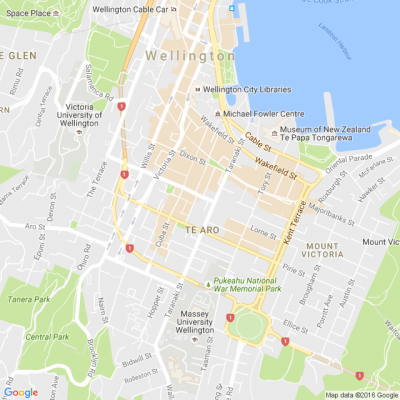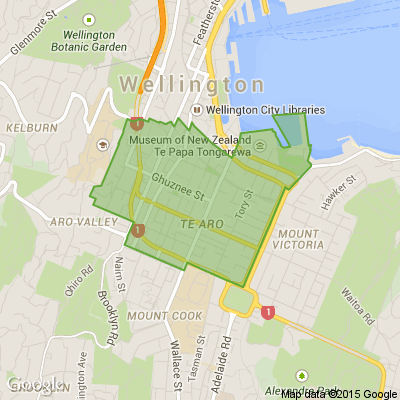
Know what’s happening
Access the private noticeboard for verified neighbours near you. Keep informed about any suspicious activity, send urgent updates to your neighbours when required and discuss emergency planning.
Get to know your neighbours
Browse the directory and start getting to know your neighbours. Don’t want to post to the whole neighbourhood? Send a private message.
Buy, sell and give away
Want to declutter your garage? Buy some used household items? Give away some garden stuff? Become a verified neighbour to browse and post items for sale. Trading is simple when everyone lives nearby.


Have a browse...
Check out what your neighbours are selling (or giving away!) here.

Thank you for using Neighbourly
You may receive an email confirmation for any offer you selected. The associated companies will contact you directly to activate your requests.
Come along and see Whitby Collegiate at our next Open Day on Sunday 14 March from 11am to 1pm.
Whitby Collegiate is the first progressive, independent, co-educational school in the Wellington region for Years 7 to 13.
• Excellent teacher to student ratios.
• Strong academic results.
… View moreCome along and see Whitby Collegiate at our next Open Day on Sunday 14 March from 11am to 1pm.
Whitby Collegiate is the first progressive, independent, co-educational school in the Wellington region for Years 7 to 13.
• Excellent teacher to student ratios.
• Strong academic results.
• A supportive learning environment.
• Buses running to and from the Kāpiti Coast, Porirua, Johnsonville and the
Hutt Valley.
Register for the Sunday 14 March Open Day here.
Find out more

UCOL at Taratahi have short residential courses starting now, providing candidates with a jump start to a career on the land.
These are fully-funded courses delivered in partnership with MPI and provide skills and training to meet needs across the primary industries.
Starting from March there… View moreUCOL at Taratahi have short residential courses starting now, providing candidates with a jump start to a career on the land.
These are fully-funded courses delivered in partnership with MPI and provide skills and training to meet needs across the primary industries.
Starting from March there are courses in Apiculture, Dairy, Shearing, Fencing, general Ag-contracting and specialist vehicle training.
All courses are residential at Taratahi, both the cost of board and training is covered*.
Following training at Taratahi, UCOL has fee-free agriculture certificates and diplomas or job opportunities that await.
Get in touch with UCOL today (0800 GO UCOL), secure your place and get the skills to start your career on the land.
*Candidates must be over 18 for residential stay, self-catering at weekends.
Find out more

Nicholas Boyack Reporter from Community News
Due to low water supply in Wellington region and not enough rain, there is now a BAN on residential sprinklers and irrigation systems in Lower Hutt, Upper Hutt, Porirua, and Wellington City council areas.

15 replies (Members only)
TBI Health - Physiotherapy & Rehabilitation Newtown
Are you currently working from home? It’s time to make sure your set-up is keeping you well, physically and mentally. Here are our top tips to making it work, long-term.

TBI Health - Physiotherapy & Rehabilitation Wellington
Are you currently working from home? It’s time to make sure your set-up is keeping you well, physically and mentally. Here are our top tips to making it work, long-term.

Giulia from Newtown
Handy blender with two speeds plus pulse and 1.5L glass jug. Great for smoothies, hummus, oat milk, anything! Works great, only selling because I'm downsizing.
Pick up Kilbirnie.
Cheers!
Price: $50
Seamus Boyer from Wellington City Council
Kia ora Pōneke,
From 11:59pm tonight, Sunday 14 February, Wellington, along with most of New Zealand, will be re-entering COVID-19 Alert Level 2. This will last until midnight, Wednesday 17 February, unless otherwise announced.
It follows the news that in Auckland there are three positive cases … View moreKia ora Pōneke,
From 11:59pm tonight, Sunday 14 February, Wellington, along with most of New Zealand, will be re-entering COVID-19 Alert Level 2. This will last until midnight, Wednesday 17 February, unless otherwise announced.
It follows the news that in Auckland there are three positive cases of COVID-19. The Auckland Region will move to Alert Level 3 for the same period.
These changes of Alert Level will be reviewed on a 24-hour basis and with daily updates, the first being on Monday afternoon (15 February).
We've been through this before, and it's time for us to unite once again.
For information on how Council services and facilities will operate during Alert Level 2, please visit our website here:
wellington.govt.nz...
For more information on health advice or the Alert Levels, please go to: covid19.govt.nz
Be kind and stay safe, Wellington. He waka eke noa! 💛
#OurWellington #TōTātouPōneke #KiaKaha

11 replies (Members only)
It has been revealed that aluminium pieces may be present in a Pams product.
In a statement, the Ministry for Primary Industries advised that a specific batch of "Pams Bacon Pieces" should not be consumed due to the possible presence of the foreign matter.
So far, there have been no… View moreIt has been revealed that aluminium pieces may be present in a Pams product.
In a statement, the Ministry for Primary Industries advised that a specific batch of "Pams Bacon Pieces" should not be consumed due to the possible presence of the foreign matter.
So far, there have been no reports of associated injuries but if consumers have any concerns about their health, they should contact health officials.
What you need to know:
- The product is sold in Pak'n Save, Four Square and New World stores throughout the country.
- The best before date is February 28 2021.
- The bacon pieces weigh 350g and are contained in a plastic wrapping.
Customers are asked to return the product to their retailer for a full refund. Further queries can be directed to Foodstuffs Own Brands Ltd on 0800 24 51 14
For further information on the recall please visit the New Zealand Food Safety Website.

Nicholas Boyack Reporter from Community News
It’s just after midday on Wednesday and Marielle Estelle is wearing a white dress.
Carrying a $500 boom-box, two yellow signs, a water bottle and adorned in a kina ring she designed herself, Estelle walks down Cuba St in Wellington’s Te Aro with a smile.
She uses blue chalk to draw a large, … View moreIt’s just after midday on Wednesday and Marielle Estelle is wearing a white dress.
Carrying a $500 boom-box, two yellow signs, a water bottle and adorned in a kina ring she designed herself, Estelle walks down Cuba St in Wellington’s Te Aro with a smile.
She uses blue chalk to draw a large, uneven oval onto the cobblestone pavement alongside the words join the dance.
And then she starts to dance.
For the past 11 weeks she’s been coming to Cuba St during people’s lunch hour. She sees dancing as a way of making people relax and encourages everybody to give it a go.
Nicholas Boyack Reporter from Community News
Want to escape Wellington’s escalating rent prices? Consider living aboard a boat – but be prepared to fork out several thousand dollars for a vessel, and wait months for a berth in one of Wellington’s overstuffed marinas.
Wellington couple Tom Turner, 22, and Simone Zoellner, 21, have … View moreWant to escape Wellington’s escalating rent prices? Consider living aboard a boat – but be prepared to fork out several thousand dollars for a vessel, and wait months for a berth in one of Wellington’s overstuffed marinas.
Wellington couple Tom Turner, 22, and Simone Zoellner, 21, have bypassed the rental crisis by paying $100 a week for a berth in Lower Hutt's Seaview Marina.
Would you be prepared to live on a boat?
11 replies (Members only)
Nicholas Boyack Reporter from Community News
Remember if you want your pet featured, email us on yourpet@dompost.co.nz with a recent photo. Please remember to say what suburb you are from.
This week we feature Pip a ten month old border terrier, who belongs to Suzie Beverley from Hataitai.

The Team from Addictive Eaters Anonymous - Wellington
Monthly AEA Worldwide Web events are held on the third Saturday (Greenwich Mean Time) of each month.
For February it is 9.00 am on Sunday 21st (NZ time).
For newcomers interested in receiving a Zoom invitation for the event, please email aeawebevent@gmail.com.

Jan from Newtown
Hi I am posting on behalf of our employee (mail) who is looking for a nice clean warm room to rent close to Newtown, please call or text 021 430 511 thanks Jan
Robert Anderson from Curtain Clean Wellington (The Wash House)
Curtains, particularly thermal lined ones, can reduce heat loss by as much as 60%, depending on the type of windows your home is fitted with. The key to ensuring you get the most out of your curtains is in understanding exactly how heat is lost, and how the use of thermal lined curtains can prevent… View moreCurtains, particularly thermal lined ones, can reduce heat loss by as much as 60%, depending on the type of windows your home is fitted with. The key to ensuring you get the most out of your curtains is in understanding exactly how heat is lost, and how the use of thermal lined curtains can prevent this.
Understanding the physics: You know the old saying that hot air rises? Well, during cold weather that is exactly what happens, and something called the reverse chimney effect comes into play.
It is widely accepted that cold air is denser, and therefore heavier, than warm air. When it’s cold outside the air close to the window is cooled and sinks down (due to its density increasing with the temperature change). When the cooled air sinks it’s replaced by warmer air from other parts of the room.
As you can imagine, this then creates a circulating current, taking all of your warm air and replacing it with cool air. And just like that, you have lost most of your heat, not just near the window, but in the entire room.
If your curtains are not fitted correctly they form a channel between the window and the curtain, creating a space for the cooled air to sit and increasing the effect of the reverse chimney. The most important aspect to note is that it is the power of each factor combined, which decreases heat loss. No single factor works in isolation.
The first thing to ensure is that your curtains fit your windows correctly. This means that they are within a millimetre of perfect, with absolutely no gaps at the top or bottom. They need to fit against the wall snugly, creating a seal between the curtain and window.
Keep reading: www.curtainclean.co.nz...

Nicholas Boyack Reporter from Community News
Sophie and Kanan come in a pair from the Wellington SPCA.
"Since I have been here, I have found a new best friend so will need to be adopted Kanan. He is quite shy, and will need an experienced family. This is what my foster family said about me. "Sophie was shy and hid a lot when she … View moreSophie and Kanan come in a pair from the Wellington SPCA.
"Since I have been here, I have found a new best friend so will need to be adopted Kanan. He is quite shy, and will need an experienced family. This is what my foster family said about me. "Sophie was shy and hid a lot when she first came home with me. I put some food by her hiding spot and a little trail towards me and she came out and was affectionate. Until she feels safe she will hide. Sophie still - 3 months later - hides when other people come to the house, but is brave and affectionate with me. Sophie isn't really interested in toys and prefers to sleep in the sun or hang out with me. She will either snuggle into my leg on the sofa or on my lap. When she wants attention she will pat me with her paw. In the evening I would cradle her like a baby and sing to her and rub her belly, she loved it." I would do best with someone around for parts of the day, and will need to be indoors for some time until I feel safe."

 Loading…
Loading…
Are you sure? Deleting this message permanently removes it from the Neighbourly website.
 Loading…
Loading…

 Auction
Auction



 Marketed by Ben Atwill
Marketed by Ben Atwill

 Asking $535,000
Asking $535,000


 Marketed by Steve Rodwell
Marketed by Steve Rodwell

 Enquiries over $600,000
Enquiries over $600,000


 Marketed by Angela Liu
Marketed by Angela Liu

 Deadline Sale
Deadline Sale


 Marketed by Steve Rodwell
Marketed by Steve Rodwell

 Price Upon Application
Price Upon Application



 Marketed by Andrew Brodie
Marketed by Andrew Brodie

 Price Upon Application
Price Upon Application


 Marketed by Christy Kimble
Marketed by Christy Kimble

 Enquiries over $895,000
Enquiries over $895,000


 Marketed by Ben Ryan
Marketed by Ben Ryan
© Neighbourly 2024
